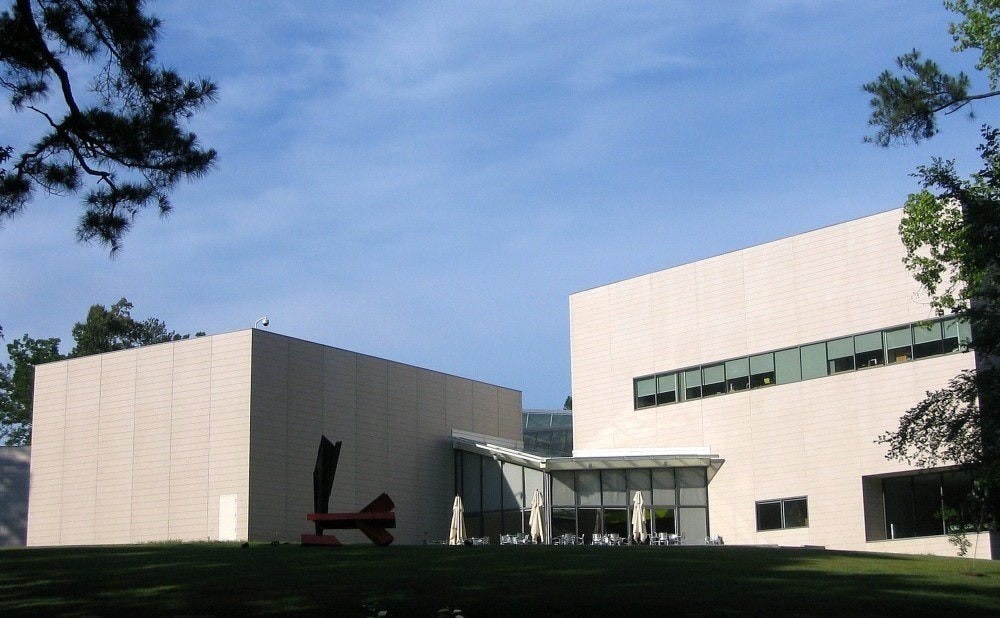The 21st century technological evolution has promoted visualization and digitization for historical representation. As more materials become available to the public, the possibilities and opportunities for increasingly comprehensive research have grown, as evidenced by a recent Nasher event.
On Jan. 17 and 18, the Nasher, in collaboration with the Wired! Lab for Digital Art History and Visual Culture, held a symposium and workshop entitled "Visualization and the Holocaust." Event organizers hoped to add to previous generations of scholarship with a technological emphasis to further explore and understand these moments in history.
“From the synagogue to the street, from the ghetto to the camp, from sites of liberation to the courtroom, the Holocaust and its history have occurred in spaces of so great a number that only digital methods are capable of analyzing them in all of their complexity,” said Paul Jaskot, professor of German art and architectural history and Wired! Lab director.
Jaskot’s studies have contributed substantial scholarly work to art history and to this growing visualization field, namely in books like “Geographies of The Holocaust” with Anne Knowles and “The Nazi Perpetrator: Postwar German Art and the Politics of the Right.” At the symposium, he presented some of his scholarly work and discussed future possibilities for research. His initial interest in the topic of visualization and art history originated from this early work, particularly “The Geographies of the Holocaust.”
“[The book] stems from the initial gathering of historians and art historians interested in the space of the Holocaust as well as scholars who use GIS on non-Holocaust topics put together by the US Holocaust Memorial Museum in summer 2007," he said.
With an increased availability and digitization of Holocaust records, scholars have been able to develop a deeper understanding of this historical significant time period and its lasting impacts. Jaskot said that the digital tools provide an exciting opportunity to extend questions and analyze evidence in new ways.
One of the interdisciplinary groups studying this time period, the Holocaust Geographies Collaborative, hopes to use the new access to data to examine the Holocaust from a geographic perspective with the use of maps and geo-visual methods, such as Geographic Information Systems (GIS). Jaskot has worked with this interdisciplinary group for over a decade, studying the politics involved in buildings and environments, particularly the architecture of the National Socialist Germany.
Jaskot became involved with the foundations of the symposium and workshop because of his extensive work through the Wired! Lab, a research group who contributes to art history and visual studies,on the environment of Krakow during Nazi occupation in World War II.
To prepare, those involved spent a year discussing their ideas for the symposium and workshop with the Mandel Center at the US Holocaust Memorial Museum, in addition to local co-sponsors.
The scholars leading the symposium and workshop wanted to create a conversation between academics on the future of visualization in fields like art history and on a variety of mapping methods, particularly as they can be used to understand time periods of mass human oppression through a new lens.
But the worked accomplished at the symposium is not done yet. A number of questions were left unsolved, including what new insights can computational approaches yield, and what digital methods can integrate large volumes of diverse historical evidence traditionally only used in locally focused case studies.
The first day consisted of a public symposium of both Holocaust and non-Holocaust scholars discussing these changing fields, and the second day was a closed workshop with conference participants discussing the future of these methods.
“In this sense, every panel is comparative, with both a Holocaust and non-Holocaust scholar engaging in a dialogue about how visualization helps us understand the complex history of human atrocities,” Jaskot said.
In discussing the future of these projects, Jaskot said, “the collaborative will continue its work on analyzing the ghetto system, of which my work on Krakow is a part.”
Get The Chronicle straight to your inbox
Signup for our weekly newsletter. Cancel at any time.

